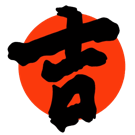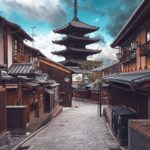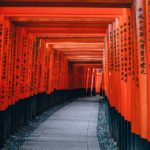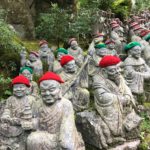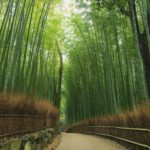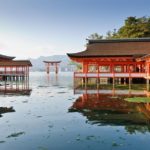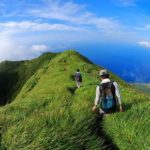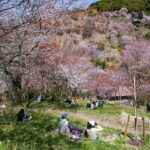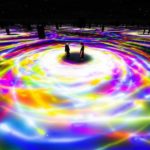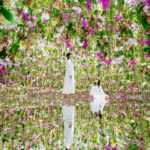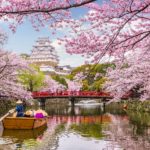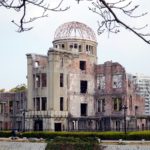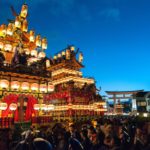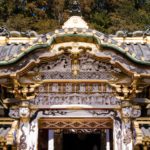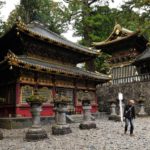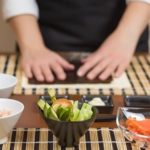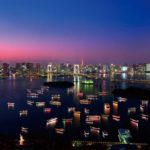Day 1: Tokyo
Tokyo is massive. It really is something that needs to be seen from high up to truly appreciate, and also a great way to orientate you to your surroundings. We like to take our guests to Tokyo Sky Tree to let them truly take in the scale of the world's largest city.
We also like to help orientate our guests by visiting Asakusa's Sensouji Temple. Sensouji is a temple, but on the temple grounds there is a shrine. As you will no doubt be seeing and exploring many spiritual places as you travel, Sensouji is the perfect place to learn about the difference between Buddhist temples, and Shinto shrines. A knowledgeable guide will be able to explain the difference and give you a brief history on how Japan's spiritual system evolved to where it is today, using this historically significant temple as a backdrop. To end this day's activities, I would like to arrange dinner on Tokyo Bay in a traditional yakatabune.
Activities (partially guided):
- Tokyo Sky Tree visit
- Sensouji Temple visit
- Asakusa Shrine visit
- Yakatabune dinner on Tokyo Bay
Day 2: Tokyo
Odaiba is a large man-made island in the center of Tokyo Bay. It houses all of Japan's concept technology, and high tech gadgetry. Even the train there is a technological feat as it is one of the only unmanned, fully-automated monorail systems in the country. Today is all about immersing in Japan's high-tech side. MIRAIKAN is the unofficial name for the exhibition hall/high-tech learning center that I've planned for this day, and the name roughly translates to the "house of the future". It houses tons of concept technology, and there are lots of hands on activities for children to explore on their own. The full name of Miraikan is the National Museum of Emerging Science and Innovation. There are many places in Odaiba that house all sorts of high-tech gadgetry. In fact, Japan's IREX conference is held here. Sony, Toyota, and many other large Japanese corporations all have concept halls here in Odaiba, so if MIRAIKAN is something that doesn't suit your needs, please let me know.
TeamLab's Borderless exhibit, unfortunately, will most likely be closed by the time you guys arrive in Japan. However their Planets exhibit (which really doesn't actually have much to do with with solar system at all), currently has no plans for closure. I've included a picture in the gallery to give you an idea of what it's like. I personally prefer the Planets experience over the Borderless one. It includes more tactile experiences and the room that 'spins' still feels like sorcery.
Activities:
- Miraikan
- TeamLab Planets exhibit hall
Day 3: Nikko
Today, as an almost complete turn from yesterday's activities, the theme and focus will be on parts of Japan's past. Nikko is just north of Tokyo, and the best way to get there is by train. There is a train that actually has a private cabin (which is pretty rare for Japan), and it's the most enjoyable way to watch the landscape change from modern, to countryside. Nikko is the resting place for the shogun who unified Japan. There is a shrine there in his honor, and it by far the most ornate of any shrine I've seen in the country. The first half of this day is best spent with a knowledgeable guide who can give you all of the history of Nikko, and the shrines so that you can appreciate it best. The shrine itself is planted right in the middle of a large cedar forest, which only adds to its majesty. After that, the next stop is more lighthearted. The Edo-era theme park isn't located too far from the shrine. I love visiting here, and they usually have to kick us out, because we typically stay until closing hours. There is so much to do, see and learn while visiting. There are impromptu sword fights, hidden ninjas in the streets, areas that teach you about the crafting process of katanas (it is insanely complex), and even stations where you can try your hand at creating your own daruma dolls. It is a lot of light-hearted fun, but I can definitely understand if it isn't exactly what you're looking for with this itinerary. Please let me know what you think about it, and we can replace this with something else (Nikko has some onsen spots nearby that we could put into this day).
As transportation in the area can be very complicated, we would like to arrange a private car for you and your guide on this day (to travel around Nikko after you have arrived by train).
Activities (guided):
- Visit to Toshogu Shrine (guided)
- Visit to Edo open-air museum/theme park (or onsen)
- Private compartment train (based on availability)
Day 4: Tokyo
Today is only partially planned, in case this day needs to be replaced.
We like to give each party a full or half free day in each of the major locations that they visit to experience some things on their own. We aren't abandoning you, however. If you guys need any recommendations, or suggestions we will happily provide them. The morning/afternoon of this day is the only thing planned. When we spoke on the phone you rated the fish market and sushi making lesson quite highly. Thus today is dedicated to that, and free time (assuming that is possible when you visit). As discussed, this activity is both a visit to Tokyo's fish market paired with a lesson on how to make sushi. We try to use the same person for both activities so that you can get to know the person you'll be making the food with, and also so that they can give you good information on the flavor profile of the fish you'll be selecting.
Activities (guided):
- Toyosu fish market tour
- Sushi-making lesson
- (free day)
Day 5: Hachijojima (Izu)
Reaching Hachijojima is done either by plane or by overnight ferry. I highly suggest the overnight ferry. They have private family rooms that we can reserve for you guys. It's really nice seeing Tokyo Bay at night, and it's also just exciting to travel by ferry. If anyone in your family suffers from sea sickness, please let me know.
Hachijojima is excellent for many reasons. It is technically part of Tokyo, but its atmosphere couldn't be further removed from the busy city. Island lifestyle in Japan is amazing, and this island is particularly blessed. It's a set of twin volcanoes in the middle of the sea, which means that the island has an excellent natural onsen that overlooks the sea, and the larger volcano makes for a really beautiful short hike. There is actually a smaller volcano inside of the larger one, both overgrown with lush greenery.
In the past, I've sent people here for go-karts, as there is a place where you can rent them to drive around the island, so if your teenagers want to use them to drive around the island, it is a possibility. The accommodations that I've chosen for you will have a car for you to use, as there isn't much in terms of public transportation. They will also prepare breakfast and dinner. They use a lot of ingredients that they themselves grow or catch. It is an ideal island ryokan stay. International driving permits aren't too hard to get, and usually only involve paying a nominal fee.
Activities:
- Volcano hike (Mt. Hachijofuji - volcano is not active)
- Visit to onsen with view of the ocean (outdoor and indoor facilities available)
- Traditional kaiseki meal
Day 6: Mikurajima (Izu)
For this day, I have a few ideas. You can use this as a relax day (because the next day will be slightly travel intense), or we could arrange for you guy to go swimming with wild dolphins at a neighboring island. The dolphins are completely wild, so there is no animal cruelty involved. The island is also one of the most interesting places architecturally that I've ever seen. It's very... vertical. A lot of the structures are built on the hills, very high up. I've visited this island for a surprise birthday plan for my wife in the past. Swimming with the dolphins was really nice. We were quite lucky in that there were quite a lot out that day, and they swam 'through' us, however you can also just watch them from the boat if you're not interested in getting in the water.
Accessing the smaller islands in the Izu Peninsula is sometimes a challenge. We have often used helicopters to transport clients from island to island (there is a regularly running daily service between islands, so it's actually quite affordable). If you do elect to visit this island for the dolphins, we would most likely end up rearranging your visits to stop here first, and then move on to Hachijojima. The islands have very few people living on them (the least populated island in Japan is next to Hachijojima), so things move quite slowly here.
Activities:
- Swimming with wild dolphins (tentative)
- Restaurant reservation (possibly on Mikurajima)
Day 7: Hiroshima
It isn't really talked about much online, but I think Hiroshima has some of the best food in Japan. The seafood is fresh, and caught in the Seto Inland Sea, and Hiroshima has its own style of okonomiyaki, and an entire 5-story building that is completely filled with stalls where each cook has their own unique take on it. Today will be dedicated to having dinner there, and exploring Miyajima, which translates to 'shrine island', or 'sacred island'. Miyajima is best known for the torii at Itsukushima, however it also has an amazing view of both Hiroshima and the Seto Inland Sea from the top of Mt. Misen. In Shintoism deer are sometimes seen as messengers of the gods, and Miyajima is home to many of them, which roam the island freely. To get the most out of this day's activities, a guide is highly recommended.
Activities (guided):
- Visit to Miyajima
- Ropeway up Mt. Misen
- Dinner at Okonomimura
NOTES: I wanted to start your journey outside of Tokyo at the location furthest away from the city so that all of the subsequent stops would be made slowly moving back towards Tokyo, and thus reducing travel time between locations. Getting here is best done by plane from Tokyo, however a train can be used. The options for getting there from Hachijojima are:
- take a flight back to Tokyo (45 minutes), then take the train to Hiroshima Station (around 4 and half hours), total will most likely be close to 6 hours.
- take a flight back to Tokyo, and then take another flight to Hiroshima (around an hour), total will most likely be close to 2 and half hours or so).
There are three flights between Hachijojima and Tokyo each day, the earliest departing at 9AM. If you then flew to Hiroshima, we would definitely have time for a visit to Miyajima, where you could eat, explore, and see the sunset on the massive torii floating there at Itsukushima Shrine. However it will be a lot of moving around as you will have to take a ferry to Miyajima, and back towards the end of the day.
Day 8: Hiroshima
In Japan, all school students are required to visit the Peace Memorial Park, and the A-Bomb dome in Hiroshima. It is part of their education. So when you do visit, don't be surprised if you see herds of school children visiting with you. The Peace Memorial Park is definitely worth a visit. You mentioned architecture in your initial message, so I figured it would be worth mentioning that Kenzo Tange designed the park, and many of its buildings. He's the same architect who designed many of the facilities for the 1964 Olympics.
Today is definitely best experienced with a guide, who can either be with you while you're in the museum, and walking to the A-Bomb Dome, or just with you after you leave the museum. Many of the guides here are people who have been directly affected by what happened here. Either they have lost family members or they themselves were alive during that time.
I would like to keep the rest of the day open. After visiting the park, we can schedule a train for you to head to Kyoto, where you can rest and catch up, or have some free time to explore Kyoto.
Activities (guided):
- Visit to Peace Memorial Park
- A-Bomb Dome
- Peace Memorial Museum
- Bullet train to Kyoto (roughly 1.5 hours)
Day 9: Kyoto
Today is mostly about exploring the Arashiyama district. The day will start with a boat ride down the Hozugawa river. This ride however is a traditional 3-manned wooden boat, and is a portion of the route that used to be used in the past to transport cargo between Osaka and Kyoto. The ride is beautiful, and a lovely way to take in the natural surroundings of Kyoto and the beautiful cherry blossom trees that line the river. It ends in the Arashiyama district, where you will have the chance to visit one of Japan's most beautiful zen gardens (a UNESCO World Heritage Site). The garden is somehow beautiful and different in every season. It was masterfully designed. There is a path behind Tenryuji that is famous for being lined with extremely tall bamboo. I'm going to include a picture of it in the small gallery below.
The Arashiyama area also has a small mountain called Iwata that also serves as a sanctuary for monkeys. It is a really nice hike (albeit, very short), and the top of the mountain gives you a view of the entire city of Kyoto. Kids typically really like this park.
There is an open air steam-engine train that is an excellent way to get to the meeting spot for taking the boat down the river. It is a beautiful way to get to the boat, however it will add a small amount of time to your overall journey. I do believe that it is worth it though! I'd also like to use this day to arrange a tea ceremony for your family as it is something that you mentioned your wife may enjoy on our phone call. I haven't added it to the list of activities, however there is a really nice temple in Arashiyama that is rarely visited. It has hundreds of statues, and each of them was made by a completely different person. One of the former head monks decided that he would teach sculpting to anyone that visited the temple and wanted to learn (this was in the 80's, I believe). All of the sculptures are spread around the temple grounds, and because he gave his students carte blanche with their designs, you'll see some of the ojizou statues wearing headphones, and holding a walkman or other contemporary paraphernalia. It is a site that is unlike thing else in Japan.
Activities:
- Hozugawa traditional riverboat ride
- Short hike of Iwatayama Monkey park
- Tenryuji zen garden visit
- Torokko Steam Train
- Tea Ceremony
Day 10: Nara + Mt. Yoshino
Since you guys will be visiting during what I expect to be the height of cherry blossom season, I wanted to plan a day that takes full advantage of that. Kyoto is Japan's ancient capital, and so I'm also trying to include some of those ancient sites, but also spread them out so that your kids don't get "temple'd out". The temple grounds of Todaiji will be the first stop, It is home to the largest bronze statue of the Buddha in the world, and much like Miyajima, it is home to many deer that roam the temple grounds freely. Visiting Horyuji, and Kasuga Taisha would be great as well (time permitting).
After exploring the area around Todaiji, I would like to plan a hanami experience for you and your family. The hanami tradition has a very long history in Japan, and is something that is enjoyed every year all across the country to welcome the start of Spring. You will no doubt see many people enjoying the cherry blossoms with sake, and food while you are traveling across the country. Mt. Yoshino is a rare sight as it is one of the few places in Japan that is carpeted in hundreds of cherry blossom trees. I'd like to hire a cook to put together a hanami picnic basket for you all to enjoy underneath a cherry blossom tree there.
Activities (guided):
- day trip to Nara
- visit to Todaiji Temple
- Kasuga Taisha Shrine visit (time permitting)
- Horyuji Temple visit (time permitting)
- Mt. Yoshino hanami picnic
NOTES: Having a guide today is almost a necessity. Finding the right spot on Mt. Yoshino is something that a guide will be able to assist with, as the trees bloom at different times in segments across the mountain. Having a knowledgable guide who knows which area is expected to bloom at the time of your visit will make this day a lot better than going on your own.
Day 11: Himeiji
Today will be all about visiting Himeiji Castle in Himeiji. This is another day where the guide you have is very important, as they can make the day a much more special one, by imparting knowledge the history of the castle.
Himeiji is special in that it is one of the only castles that is mostly original, and has survived wars, fires, and earthquakes. It is also a UNESCO World Heritage site, and is by far the most beautiful castle in all of Japan (in my opinion, it isn't even a close competition).
For the evening, I would like to reserve dinner at Kibunesou, or a similar place in Kyoto. Banzai is Kyoto's version of a traditional kaiseki dinner and Kibunesou is one of the best places to experience it. The restaurant is situated on a river, and the seating area is a large tatami mat area that is 'floating' on top of the river. To give you an idea, please check out their website here:
https://www.kibunesou.com/
Activities:
- Himeiji Castle (via bullet train, short journey ~40 minutes)
- Dinner reservation (Kibune-sou)
Day 12: Takayama
I’ve saved the last destination on your trip for what I think is going to be the most memorable. The Takayama Matsuri is registered as a UNESCO Intangible Cultural Heritage of Humanity asset. It is widely considered to be one of the most beautiful matsuri festivals in all of Japan. The matsuri is two days long, however the night of the first festival is amazing as all of the floats will be lit up with beautiful chochin lanterns. Takayama is known historically for its amazing craftsmen, and the yatai floats and ornate wood carvings give you an idea of why the artisans in this region were so highly regarded. You can also expect for the traditional food stalls to be out on the streets at night during that portion of the festival (pending any local ordinances). This is kind of a cheesy video, but this guy's footage of the nighttime activities is really good and gives you an idea of what the festival looks like. You can skip to 0:40 if you don't want to hear him talk.
Today, a good guide is definitely recommended.
Activities (guided):
- Takayama Matsuri
Day 13: Takayama
The festival is technically two days long, however the 1st day is the only one that has the beautiful night portion. I think that one day is enough, however if it is something that you wish to experience more of, we could hire a guide for two days instead of one.
My suggestion for this day is a beautiful village that is called Hida no Sato. Shirakawa-go is very famous for preserving its traditional thatch-roof style houses, and for the most part the traditions of that period in Japan. Hiida no Sato is similar, however every house in this village has a different traditional Japanese craft that everyone can participate in. I've included a picture of the village in the gallery so that you can get an idea of what it looks like. The website for the village is here:
https://www.hidanosato-tpo.jp/english12.htm
The English site doesn't really do it justice (it also looks like it was built in the early 90's), however it is a very nice place to visit. Not only are their activities and crafts to experience, but the village itself serves as an open-air museum, and is really beautiful. I think that this is the perfect activity before heading back to Tokyo to rest and catch up on everything. The dinner reservation suggestion is Moonflower Sagaya. It is the only restaurant in the world where TeamLab has designed the interior. If your children were interested in the TeamLab Planets or Borderless exhibit, then they will love this. The food is amazing, with a focus on wagyu beef from the Kyushu region. The projections change based on which season you're visiting and the room "senses" the food that is being served and projects different things on to your table based which course you are on. Sagaya usually does not accept children, however if this is something that you would like to experience with your family, please let us know. Their website is here:
https://moonflower-sagaya.com/en/
Activities:
- Hiida no Sato
- Traditional Japanese crafts
- Cooking lesson (depending on the schedule when you visit)
- Bullet train back to Tokyo
- Dinner reservation in Tokyo (Moonflower Sagaya)
Day 14: Tokyo
I'm currently leaving this day open until I'm aware of when your flight departs.
